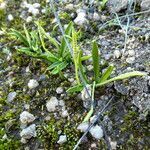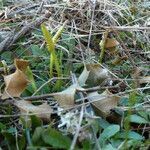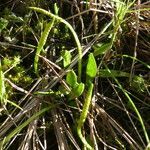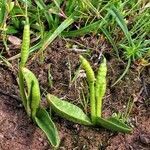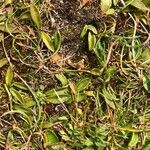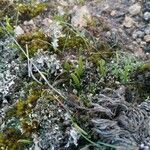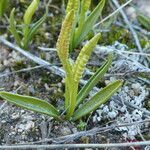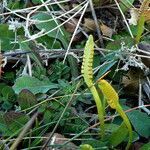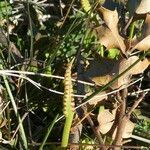A very small fern. It grows from a tuber or underground rhizome. It grows 5-15 cm high. There are one or two leaves at the base and a slender stalk or frond from the tuber. This is divided and one part is a fertile frond while the other is an infertile frond. The fronds are 12 mm-12 cm high. The infertile frond is like a leaf half way down the stalk. this can be 5 cm long. The tuber is edible.
